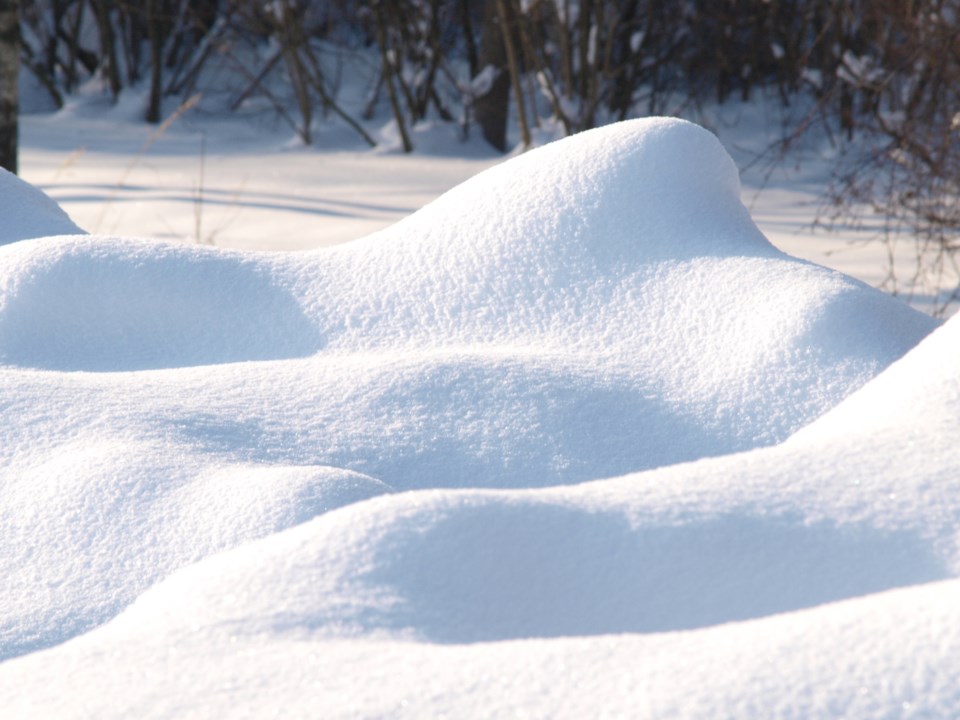REGINA - The Saskatchewan Water Security Agency (WSA) is sharing the spring runoff forecast for 2022.
This forecast is based on conditions as of March 1. As previously reported, the hot and dry conditions throughout 2021 caused most areas of the province to go into winter with drier than normal moisture conditions. Therefore, despite significant amounts of snow, some areas with dry conditions at freeze-up are still predicted to have normal to below normal runoff.
The forecast calls for above-normal runoff for an area that includes Weyburn, Regina and Indian Head. The Estevan area is in the region with forecasted below normal runoff. The eastern area, including Carlyle, is expected to have near-normal runoff.
In the Souris River Basin, both Rafferty Reservoir and Grant Devine Lake are below their Feb. 1 drawdown target elevations. Based on current conditions within the basin and the volumetric runoff forecasts, non-flood operations, under the 1989 Canada-US Agreement on Flood Control and Water Supply in the Souris River Basin, are in effect. As such, no additional drawdown of these reservoirs is required prior to the spring runoff.
"The snowmelt runoff response is expected to generally be near normal across the Moose Mountain Creek basin," the forecast states. "Due to a below normal snowpack and dry conditions in the fall, the Long Creek Basin and the lower portion of the Souris River are expected to observe a below normal runoff response in 2022. The headwater areas of the Souris River, namely the area above Weyburn, is expected to see an above normal snowmelt runoff response.
"This is promising for the filling of Nickle Lake; however, with the dry conditions over the last couple of years, Rafferty Reservoir is not expected to fill in 2022. Based on current conditions, none of the major reservoirs in the basin are expected to fill in 2022. It is anticipated that reservoir releases during the spring runoff period will be limited to what may be required to meet international apportionment obligations.
"Any releases to satisfy these international obligations will be made from Grant Devine Dam. Detailed forecasts for the Souris River Basin are developed on or near the first and fifteenth of each month, beginning in February, up until the snowmelt runoff event."
A below to well below normal snow melt runoff response is expected over much of southern Saskatchewan. Only areas east of Moose Jaw are forecast to receive near or above normal runoff. Below normal runoff in the southwest may result in some water supply issues, including shortages and potentially water quality related issues later in the year. With a significant snowpack, above to well above normal snowmelt runoff yields are expected across central areas of the province. However, flooding is not expected at this time.
With significant snowpack within the North Saskatchewan River Basin, there is an elevated risk of a dynamic ice breakup event occurring on the North Saskatchewan River. This may result in ice jamming and flooding similar to what was observed on the river in 2020. The public should remain vigilant when near melting waterways as ice jamming and breakup can be unpredictable.
Also, with an alpine snowpack that is generally well above normal, the agency is optimistic that flows on the Saskatchewan river system and levels at Lake Diefenbaker will be better than what was observed in 2021. The Water Security Agency will continue to protect and manage water supply to support industry and habitat.
Most long-range forecasts are predicting near normal precipitation for much of the province for March, April and May. The only exception is the southeast portion of the province where slightly above normal precipitation is favoured by the models. Most models are predicting near normal temperatures over the southeast portion of the province and below normal temperatures across the remainder of Saskatchewan over the next three months.
The WSA actively monitors the snow pack and precipitation during the winter months to forecast the province's available water supply through the summer and fall and to prepare for any potential issues. The agency completed snow surveys in mid-February to assess the water available for runoff. For the most part, water supplies from the province's major reservoirs are expected to continue to meet the province's needs in 2022.
When developing this snowmelt runoff outlook, the WSA assumes normal weather conditions going forward to the conclusion of the melt. Any increased runoff potential would be reflected in the April forecast, provided runoff is not already underway. The current report can be found on the website under provincial forecast.


